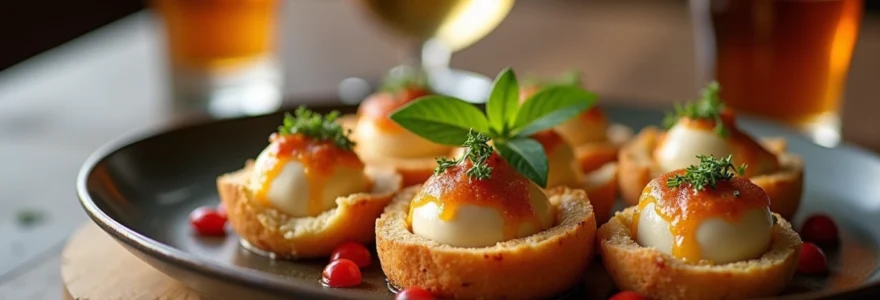Food and drink pairings are more than just a culinary trend; they’re a gateway to understanding and appreciating diverse cultures around the world. By exploring the intricate relationships between regional cuisines and their traditional beverages, we unlock a deeper appreciation for the history, traditions, and sensory experiences that define different societies. These pairings offer a unique lens through which to view cultural identity, social customs, and even the geographical influences that shape a nation’s gastronomy.
The art of pairing food and drink goes beyond mere taste compatibility. It’s an immersive experience that engages all the senses, creating a harmonious balance that can transport diners to far-off lands or evoke cherished memories. From the crisp acidity of a German Riesling cutting through the richness of schnitzel to the way a robust Italian Barolo complements a hearty osso buco, these combinations are carefully crafted to enhance both the meal and the overall dining experience.
Culinary synergy: the science of food and drink pairings
At the heart of successful food and drink pairings lies a complex interplay of flavours, aromas, and textures. This synergy is not just a matter of personal preference but is rooted in scientific principles. The chemical compounds present in both food and beverages interact on our palates, creating sensory experiences that can be complementary, contrasting, or transformative.
One key factor in pairing is the concept of flavour bridging . This occurs when similar flavour compounds are present in both the food and the drink, creating a seamless transition between bites and sips. For example, the earthy notes in a Pinot Noir can beautifully complement the umami-rich flavours of mushroom risotto, enhancing the overall taste experience.
Another important aspect is palate cleansing . Certain drinks, particularly those with high acidity or effervescence, can refresh the palate between bites, preparing it for the next morsel. This is why sparkling wines are often paired with rich, fatty dishes – the bubbles and acidity cut through the heaviness, creating a balanced sensation.
The concept of flavour intensity matching is also crucial. Delicate flavours in food require subtler drinks to avoid overpowering them, while robust dishes can stand up to more intense beverages. This balance ensures that neither the food nor the drink dominates the palate, allowing both to shine in harmony.
Global gastronomy: cultural flavour profiles and beverage traditions
Every culture has its unique flavour profile and beverage traditions, shaped by history, geography, and local ingredients. These distinctive combinations offer insight into the values and lifestyle of a society, making food and drink pairings an essential aspect of cultural exploration.
Mediterranean mezze and ouzo: greece’s Anise-Flavoured aperitif experience
In Greece, the tradition of mezze – a selection of small dishes – paired with ouzo exemplifies the Mediterranean approach to dining. Ouzo, an anise-flavoured aperitif, complements the varied flavours of mezze dishes like dolmades, tzatziki, and grilled octopus. The licorice notes of ouzo cleanse the palate between bites, while its slight sweetness balances the saltiness of many mezze items.
This pairing reflects the Greek culture of shared dining and leisurely meals, where conversation and conviviality are as important as the food itself. The ritual of adding water to ouzo, watching it turn cloudy, is a social act that brings diners together, embodying the warmth and hospitality of Greek culture.
Sushi and sake: japan’s Umami-Rich culinary harmony
The pairing of sushi with sake is a testament to Japan’s refined culinary sensibilities. Sake, a rice wine, shares many flavour compounds with sushi, creating a seamless flavour bridge. The umami-rich profile of both sushi and sake creates a synergistic effect, enhancing the overall taste experience.
Different types of sake can be paired with various sushi preparations. For instance, a light, crisp sake might accompany delicate white fish, while a fuller-bodied variety could complement fattier fish like salmon or tuna. This meticulous attention to detail reflects the Japanese cultural value of harmony and balance in all aspects of life.
Cheese and wine: france’s regional pairing expertise
France’s reputation for gastronomic excellence is perhaps best exemplified by its mastery of cheese and wine pairings. Each region of France boasts its own unique cheeses and wines, with local pairings honed over centuries. The principle of terroir – the environmental factors that influence a food’s character – is central to these pairings.
For example, the tangy Crottin de Chavignol goat cheese from the Loire Valley pairs beautifully with the region’s crisp Sancerre white wine. The acidity of the wine cuts through the creaminess of the cheese, while the mineral notes in both create a harmonious flavour profile. This regional specificity in pairing reflects France’s deep connection to its land and culinary heritage.
Sensory exploration: taste, aroma, and texture in cultural dining
Cultural food and drink pairings engage all our senses, creating a multi-dimensional experience that goes beyond taste alone. The interplay of aromas, textures, and visual presentation contributes to the overall enjoyment and cultural immersion.
Mouthfeel mastery: contrasting textures in thai cuisine
Thai cuisine is renowned for its complex flavour profiles, but it’s the mastery of contrasting textures that truly sets it apart. A classic Thai meal might pair a creamy coconut curry with crispy fried shallots, creating an exciting textural contrast. This is often accompanied by a cold, effervescent Thai iced tea, which cleanses the palate and provides a refreshing counterpoint to the spicy dishes.
The importance of texture in Thai food reflects the culture’s appreciation for balance and harmony in all aspects of life. Each bite is designed to stimulate multiple senses, creating a holistic dining experience that embodies the Thai philosophy of finding equilibrium in all things.
Aromatic complexity: indian spices and lassi combinations
Indian cuisine is characterised by its bold use of spices, creating aromatic dishes that are as fragrant as they are flavourful. The pairing of spicy curries with cooling lassi – a yogurt-based drink – is a prime example of how beverages can complement and balance intense flavours.
A mango lassi, for instance, not only helps to temper the heat of a spicy vindaloo but also adds a layer of aromatic complexity to the meal. The sweet, fruity notes of the mango interact with the spices in the curry, creating a sensory symphony that engages both the nose and palate. This pairing reflects the Indian cultural value of achieving balance through contrasts.
Flavour balancing: mexican mole and tequila pairings
Mexican cuisine showcases the art of flavour balancing, particularly in the pairing of complex mole sauces with agave-based spirits like tequila. Mole, a sauce made from a multitude of ingredients including chilli peppers, chocolate, and various spices, presents a rich tapestry of flavours that can be challenging to pair.
A well-chosen tequila can complement the depth of mole while providing a clean, slightly sweet counterpoint. For example, an aged añejo tequila, with its notes of vanilla and caramel, can enhance the chocolate undertones in a mole negro. This pairing demonstrates the Mexican cultural appreciation for layered flavours and the celebration of indigenous ingredients.
Culinary tourism: immersive food and drink experiences
Culinary tourism has emerged as a powerful way to experience different cultures through their food and drink pairings. These immersive experiences allow travellers to engage with local traditions, agricultural practices, and social customs in a deeply personal way.
Vineyard tours and tastings in tuscany’s chianti region
In Tuscany’s Chianti region, vineyard tours offer visitors a chance to explore the terroir that gives Chianti wines their distinctive character. These experiences often include tastings paired with local specialities like pecorino cheese and prosciutto , allowing guests to understand how the wine complements regional cuisine.
Such tours provide insight into Italian wine-making traditions, the importance of family-run estates, and the cultural significance of sharing food and wine. They embody the Italian concept of la dolce vita , celebrating the pleasure of good food, fine wine, and convivial company.
Street food markets and local brews in hanoi’s old quarter
Exploring the street food markets of Hanoi’s Old Quarter offers a vibrant introduction to Vietnamese culinary culture. Here, visitors can sample local dishes like pho and banh mi paired with traditional rice wine or bia hoi – fresh beer served straight from the barrel.
These pairings reflect the Vietnamese approach to dining, where meals are often enjoyed communally on the street. The experience of navigating bustling markets, interacting with local vendors, and enjoying food and drink in a lively atmosphere provides a window into everyday Vietnamese life and social customs.
Farm-to-table dining and craft beer in portland, oregon
Portland’s renowned farm-to-table dining scene, coupled with its thriving craft beer industry, offers a modern take on food and drink pairings. Many restaurants work closely with local farms and breweries to create menus that showcase regional ingredients and flavours.
Diners might enjoy a locally-sourced, seasonal salad paired with a small-batch IPA brewed just miles away. This approach reflects Portland’s cultural values of sustainability, community support, and culinary innovation. It also demonstrates how contemporary food cultures are creating new pairing traditions that honour local resources and artisanal production methods.
Modernising tradition: contemporary takes on classic pairings
As global culinary landscapes evolve, chefs and mixologists are reimagining traditional food and drink pairings, creating innovative combinations that respect cultural heritage while embracing modern techniques and global influences.
Molecular gastronomy and cocktail pairing at elbulli foundation
The revolutionary approach of molecular gastronomy, pioneered by chefs like Ferran Adrià at elBulli, has transformed the concept of food and drink pairings. By deconstructing and reimagining traditional dishes, these chefs create new textures and flavour combinations that challenge conventional pairing rules.
At elBulli Foundation, a cocktail might be paired with a dish that shares its molecular structure rather than its flavour profile. For instance, a spherified olive might be served with a martini-inspired foam, creating a playful dialogue between solid and liquid forms. This avant-garde approach reflects a cultural shift towards experimentation and sensory exploration in dining.
Fusion cuisine and Cross-Cultural beverage matching
Fusion cuisine, which blends culinary traditions from different cultures, presents exciting opportunities for innovative drink pairings. A Japanese-Peruvian fusion dish like tiradito – a Peruvian-style sashimi – might be paired with a sake-based cocktail infused with Peruvian pisco and lime.
These cross-cultural pairings reflect our increasingly interconnected world, where culinary traditions blend and evolve. They celebrate cultural diversity while creating new flavour combinations that can become traditions in their own right.
Plant-based alternatives in traditional Food-Drink combinations
The rise of plant-based diets has led to creative reinterpretations of classic food and drink pairings. Innovative chefs are crafting plant-based versions of traditional dishes and pairing them with both alcoholic and non-alcoholic beverages that complement their unique flavour profiles.
For example, a vegan ‘cheese’ board made from cultured nuts might be paired with natural wines or kombucha, offering a contemporary twist on the classic cheese and wine pairing. These adaptations reflect changing dietary preferences and a growing awareness of sustainability issues in food production.
Ethical consumption: sustainable and authentic cultural experiences
As travellers become more conscious of their impact on local communities and environments, there’s a growing emphasis on ethical and sustainable culinary tourism. This approach focuses on supporting local producers, preserving traditional food and drink pairings, and ensuring that culinary experiences benefit host communities.
Many tour operators now offer experiences that allow visitors to engage with local farmers, fishermen, and artisanal producers. These might include foraging expeditions followed by a meal prepared with wild ingredients, paired with locally-produced wines or craft beers. Such experiences not only provide authentic cultural insights but also contribute to the preservation of traditional knowledge and sustainable livelihoods.
Furthermore, there’s an increasing focus on the provenance of ingredients and beverages. Travellers are seeking out restaurants and bars that prioritise locally-sourced, organic products and traditional production methods. This trend reflects a broader cultural shift towards mindful consumption and a desire for genuine connections with the places we visit.
By engaging with food and drink pairings in an ethical and sustainable manner, we can deepen our cultural understanding while supporting local communities and preserving culinary traditions for future generations. This approach transforms the act of dining into a meaningful cultural exchange, enhancing our appreciation for the diverse flavours and traditions that make our world so rich and fascinating.


